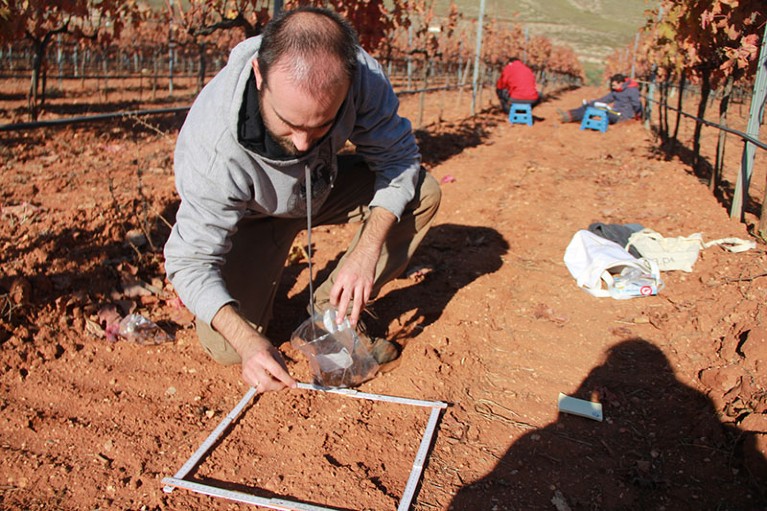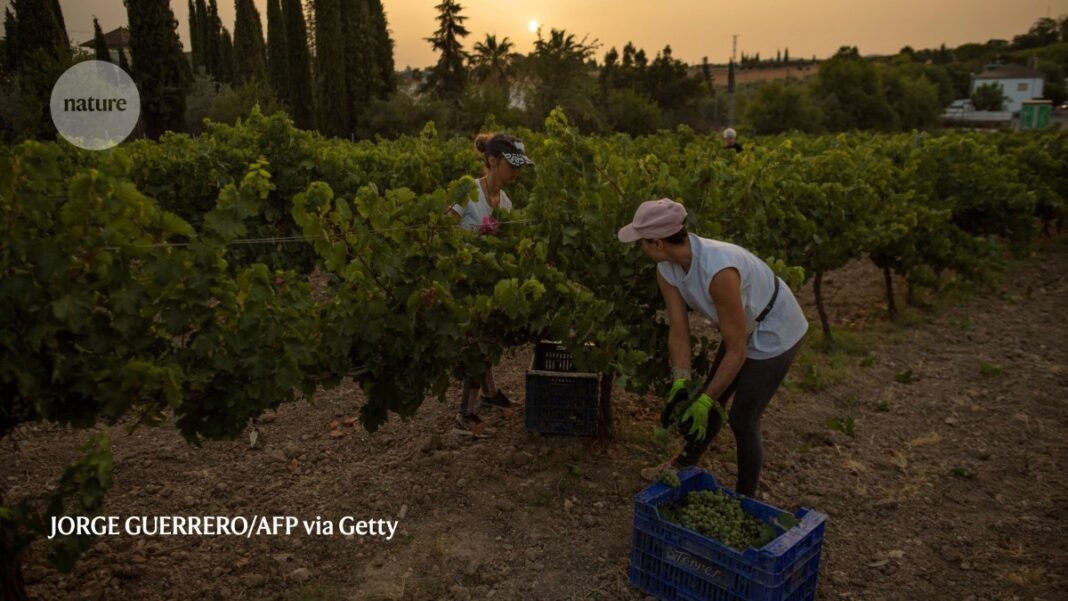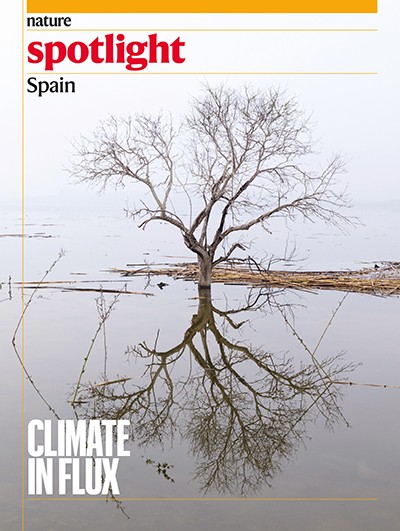
Soil quality is crucial for sustaining production in vineyards, such as this one near Montilla in southern Spain.Credit: JORGE GUERRERO/AFP via Getty
When it comes to the land, the European Union faces a reckoning: 60–70% of its soils are considered unhealthy, resulting in soil degradation. That costs €50 billion (US$55 billion) annually because of the loss of essential services and the effect on human health. Spain has the highest rates of soil degradation in Europe, with an average of 14.2 tonnes of soil lost per hectare to erosion each year1. Although its importance is often overlooked, quality soil is essential for sustaining agriculture and crucial ecosystems. Its importance was highlighted in the 2015 United Nations Sustainable Development Goals, with soil health named as a key factor in achieving several of the goals.
Nature Spotlight: Spain
Having studied soil erosion in vineyards across Europe, Jesús Rodrigo Comino, a geographer at the University of Granada, Spain, is hoping to unearth a solution. Now he works with farmers, researchers and policymakers to test and use more-sustainable soil-management practices in vineyards and more broadly. Rodrigo Comino speaks to Nature about his research programme and why healthy soils are important for Spain’s cultural heritage and economy.
Tell us about your work in soil science.
I was always a curious kid, but my passion for soil science began with my studies at the University of Malaga in Spain and at Trier University in Germany. My home region of Andalusia in Spain has some really beautiful landscapes, but some areas are heavily degraded because of soil erosion and other factors. I felt compelled to find solutions to these problems.
When I came back to Spain in 2021 after doing my PhD and a postdoctoral position in Germany, I started a project to assess soil erosion and degradation in vineyards using geographical mapping systems and artificial intelligence (AI). Soil erosion is caused by natural factors, such as extreme rainfall events and strong winds, as well as by human-driven activities, including tillage and urbanization. AI helps me to design and polish the software codes that I use to create geographical maps and analyse data. The main idea is to develop tools to help farmers make decisions. These might be about how to apply irrigation systems; which types of cover crop to plant; or when to till the soil, if necessary, to prevent soil degradation.

Geographer Jesús Rodrigo Comino examines the soil at a vineyard.Credit: Jesús Rodrigo Comino
I’m also involved in a Soil Living Labs project called SOILCRATES, which is part of an EU mission called A Soil Deal for Europe. The goal is to create field sites where soil scientists, agronomists, stakeholders and policymakers come together to conduct experiments and establish plots with sustainable soils. As part of the project, we also aim to show people how important fertile soils are to their lives and how their actions can affect soil health. The EU is now investing in a variety of projects to improve soil quality and enhance people’s understanding of soil. I’ve seen people implementing good practices to reduce soil erosion. But we’re not there yet — much more work is needed.
How has climate change affected your work?
It is evident that many places, especially urban ones, are experiencing an increase in temperature and a reduction in precipitation volume. We’re also seeing a concentration of extreme rainfall events in short periods of time, such as the flooding that happened in Valencia in Spain last year. All of these factors can affect soil health.
When it comes to the vineyards in Spain, we don’t yet have enough data to confirm whether and how climate change is altering them — but the trends are clear. We know that vineyards are encountering higher temperatures now than they did in the past, and that this is causing the vines to flower earlier. Annual rainfall is being concentrated into shorter time periods, and we’re also experiencing extreme rainfall events, which cause soil erosion.





